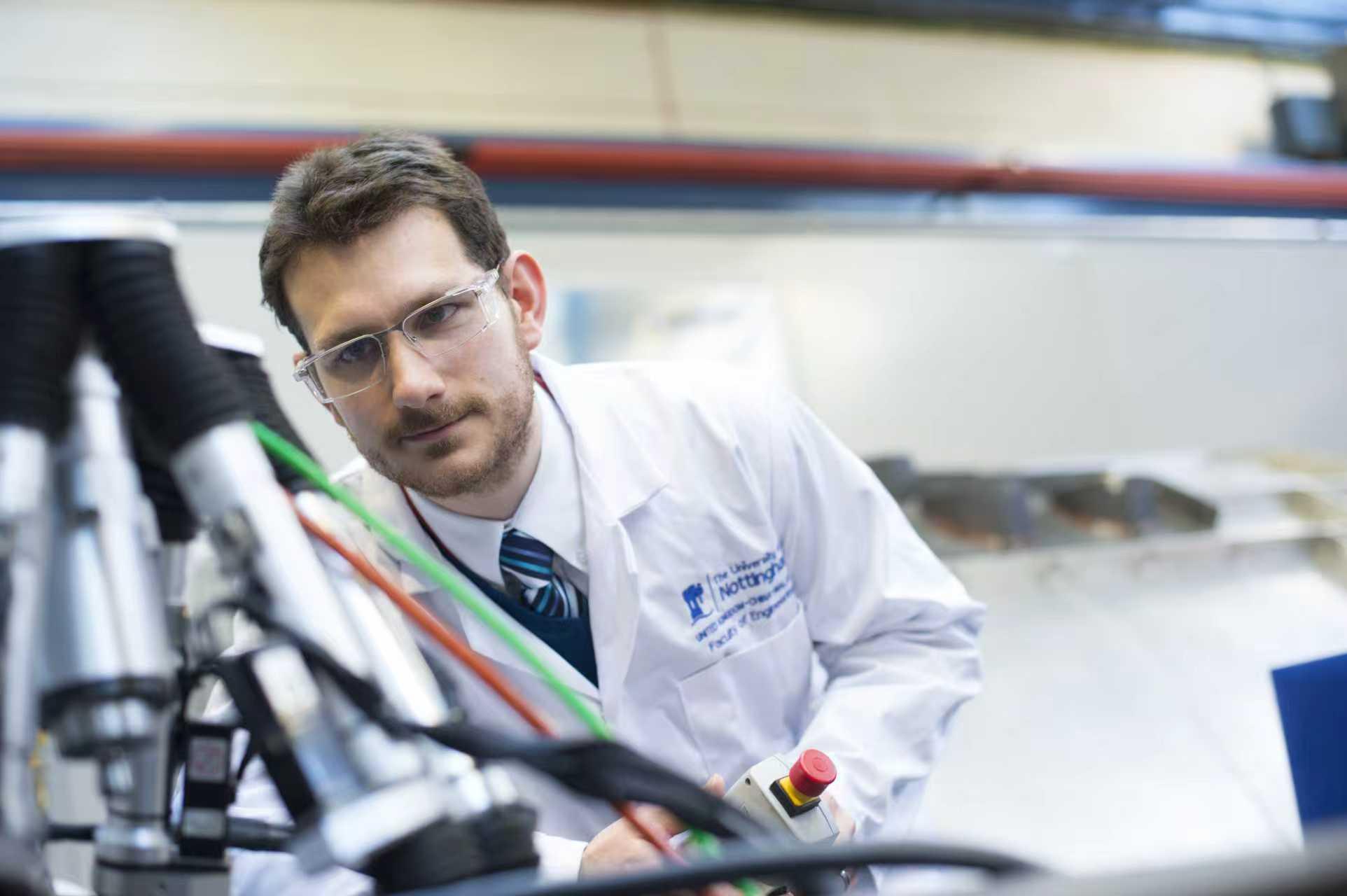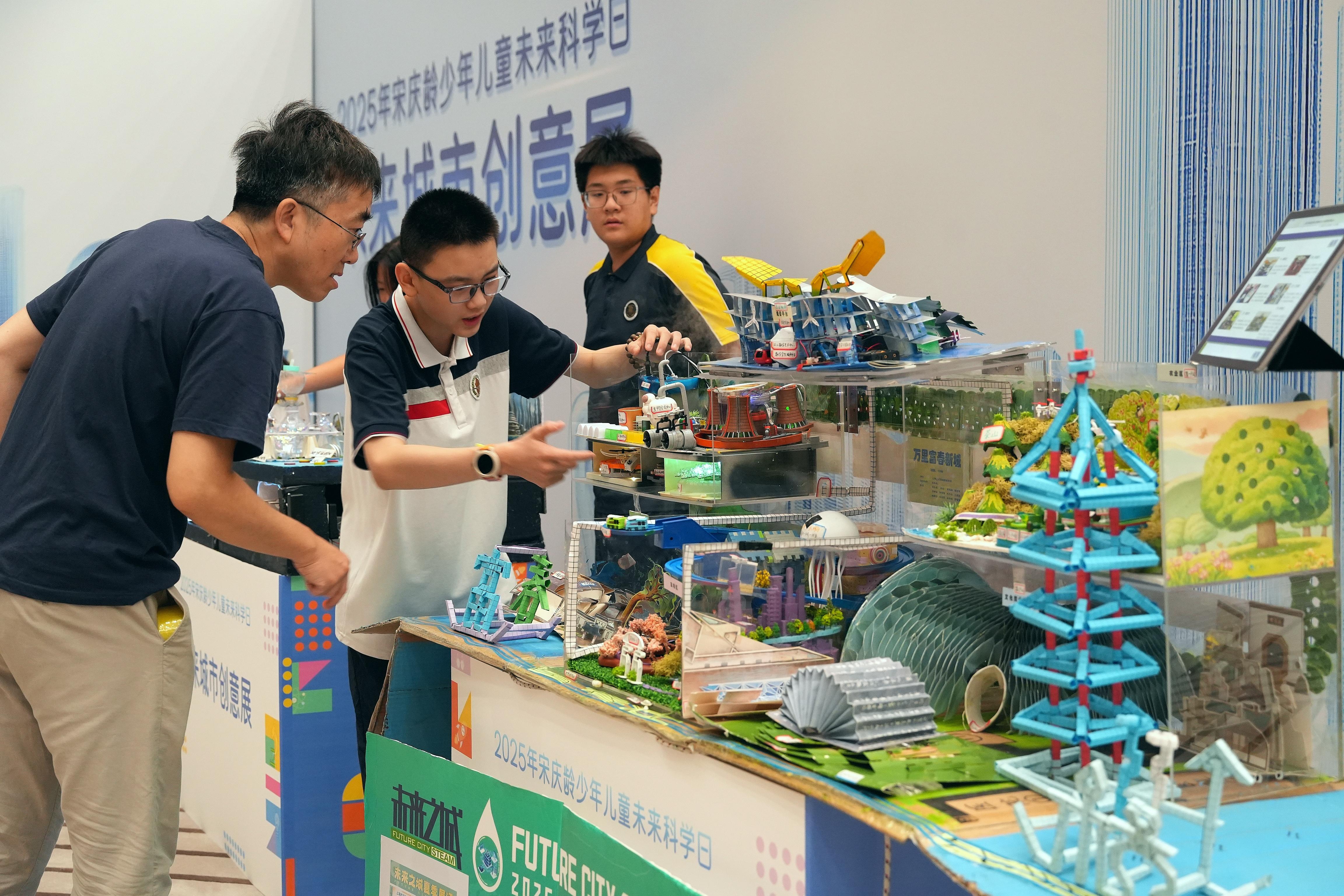Making Engineering Studies Fun

When a university course becomes more than just a requirement on a transcript, and it transforms into a pathway for students to improve skills, a launchpad for innovation, and a nationally recognized model of excellence, something extraordinary is happening in the classroom.
At the University of Nottingham, Ningbo, China (UNNC), British scientist Dr. Adam Rushworth has not only redefined how engineering is taught but is also pushing the boundaries of what’s possible in additive manufacturing.
Redefining metal printing
Rushworth’s journey into advanced manufacturing began with a practical challenge from an electrical engineering colleague: how to fabricate complex motor windings using multiple materials. Using copper for conductivity and insulation materials for safety, saw existing 3D metal printing methods struggle with such complexity. That sparked the development of a novel droplet-on-demand metal 3D printer.
Unlike conventional powder-bed fusion techniques like Selective Laser Melting (SLM), which use hazardous and costly metal powders, Rushworth’s system relies on solid metal rods. These are melted into precise droplets and deposited layer by layer. “This is much less expensive and dangerous,” he told Science and Technology Daily. “By having multiple printheads, we are also able to print more than one material at the same time.” This capability opens doors for integrated components, such as motors with built-in windings and insulating layers without post-assembly.
The implications stretch across industries. From lightweight aerospace components to customized medical devices and even hobbyist applications, the technology democratizes access to metal printing. “The applications are limitless: aerospace, automotive systems, healthcare, hobbyists, small businesses and so on.” By lowering cost and complexity, Rushworth’s approach brings advanced manufacturing within reach of innovators beyond well-funded labs.
The power of hands-on learning
At the heart of Rushworth’s teaching philosophy is a simple but powerful belief: real engineering happens with your hands. “Unless you actually build parts and systems by yourself, you don’t appreciate the difficulty of manufacturing, assembling and testing,” he said. His course is built on project-based learning, where students tackle large-scale engineering problems from concept to physical prototype.
He recalled his own shift from physics to engineering: “Most of the learning focused on abstract concepts and proofs, not concrete, hands-on problems.” That experience shaped his approach. “Gaining a degree that focuses primarily on theory may be valuable but it doesn’t equip you to solve real-world problems,” said Rushworth. His classroom is intentionally immersive, visual and tactile. Content is delivered just in time, applied immediately, and assessed through doing.
“Having students work on a physical design project makes the module more rewarding and fun!” For many, the moment their creation finally works after iterations, failures and late nights mirrors the wonder Rushworth felt as a child, launching a homemade bottle rocket 30 meters into the air. “For many of the students, the testing session for their design work holds the same sense of wonder that my experiments in design and dynamics as a child held for me,” he said.
Inspiring the next generation
Rushworth doesn’t hide his love for science fiction. From Star Trek replicators to The Three-Body Problem, these stories aren’t just entertainment for him. They are blueprints of possibility. “I mean my research is about 3D printers, robots and lasers. How much geekier can you get?” he said. He uses sci-fi as a teaching tool, showing clips from Star Wars and Star Trek to spark curiosity and challenge students to distinguish fiction from reality. “Those who this stuff really appeals to will be drawn to the classics as much as the modern.” What matters is cultivating a mindset that embraces failure as part of progress.
To students who feel daunted by engineering, his advice is direct: “Try. Fail. Try again. Fail again. Keep trying and failing. That is the only way to build experience and succeed in design and engineering.” He speaks from experience academically and personally, “I failed many times but I have always had the support I needed to keep trying.”
For Rushworth, moving from the UK to UNNC was a leap of faith, one guided by both professional opportunity and personal conviction. The university’s balance of autonomy and collaboration allow him to innovate freely in both research and teaching. “The teaching load is heavy, but I have been given a lot of freedom to shape my modules.”
For Rushworth, the goal isn’t just successful projects. “The end goal is reaching your potential, developing skills and becoming a better engineer, designer, researcher, or person than you were when you started.” In classrooms and labs across Ningbo, that vision is already taking shape, one droplet, one design, one determined student at a time.







